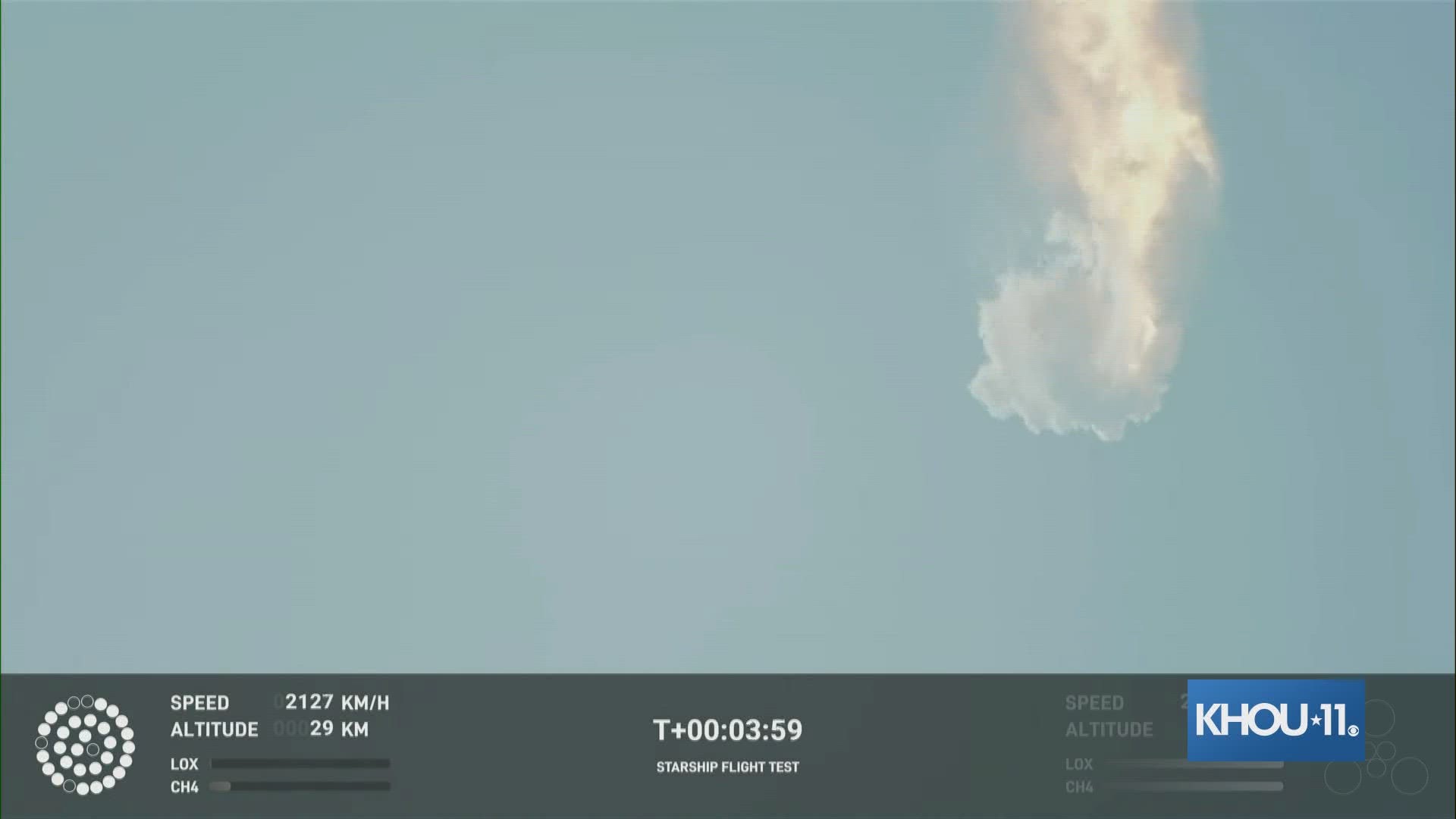CORPUS CHRISTI, Texas — The massive Starship rocket created by Elon Musk's SpaceX exploded above the Gulf of Mexico Thursday in a massive fireball several minutes after launch.
Despite the spectacular end to the rocket, SpaceX is likely pleased with the results of the launch. Their goal, according to commentators on the live broadcast of the event, was simply to make it off the launch pad.
It's the biggest and mightiest rocket ever built, with the lofty goals of ferrying people to the moon and Mars.
Jutting almost 400 feet into the South Texas sky, Starship was expected to launch Monday, with no one aboard, after Musk's company got the OK from the Federal Aviation Administration on Friday.
The launch was postponed over a technical issue just after 8 a.m. Monday. However, SpaceX was able to launch just after 8:30 a.m. Thursday.
The launch is, in part, thanks to one Kingsville resident, Ronnie Owen, who has been working on the launch preparations.
"The blood, sweat and tears our team has poured into this development vehicle are un-measurable," Owen said. "Starship Super Heavy is going to be a sight to see and hear."
The stainless steel Starship has 33 main engines and 16.7 million pounds of thrust. All but two of the methane-fueled, first-stage engines ignited during a launch pad test in January — good enough to reach orbit, Musk noted. Given its muscle, Starship could lift as much as 250 tons and accommodate 100 people on a trip to Mars. The six-engine spacecraft accounts for 164 feet of its height.
Musk anticipates using Starship to launch satellites into low-Earth orbit, including his own Starlinks for internet service, before strapping anyone in. Starship easily eclipses NASA’s moon rockets — the Saturn V from the bygone Apollo era and the Space Launch System from the Artemis program that logged its first lunar trip late last year. It also outflanks the former Soviet Union’s N1 moon rocket, which never made it past a minute into flight, exploding with no one aboard.
The Associated Press contributed to this report.

